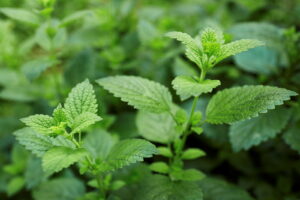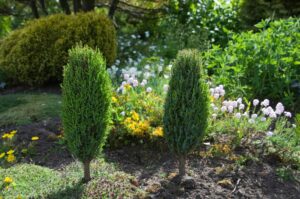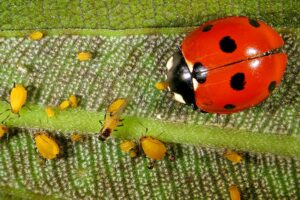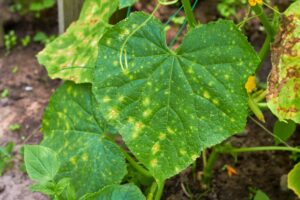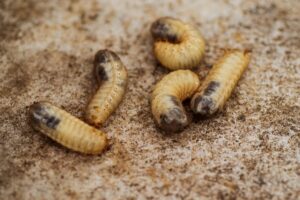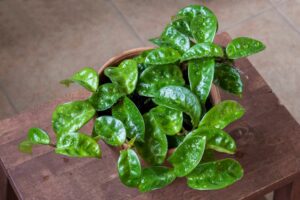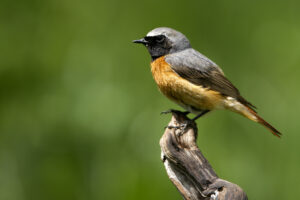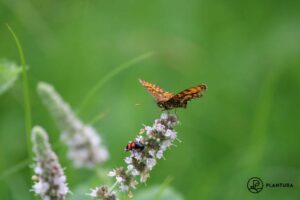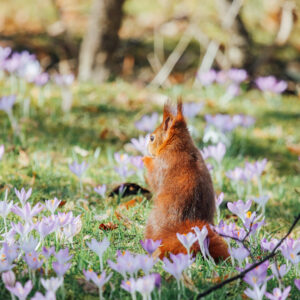Bird’s-foot trefoil: profile, sowing & weed control
Bird’s-foot trefoil not only looks beautiful in flower meadows but serves as an important food source for bees, bumblebees and butterflies.

Bird’s-foot trefoil (Lotus) can become a nuisance in gardens. We explain where it prefers to grow, how best to control it and which beautiful species of bird’s-foot trefoil are interesting for amateur gardeners.
Contents
Bird’s-foot trefoil: origin and properties
The name “bird’s-foot trefoil” is used to refer to several plants – in this case it is the clover-like species of the Lotus genus within the third largest legume family (Fabacea). Lotus species occur in a wide variety of habitats, with special species found in coastal regions and some in high mountains. Bird’s-foot trefoil can be further classified in the butterfly subfamily, which can be recognised by its characteristic flowers. They consist of five petals – the upper one forms the plume, the two on the side the wings and the lower two the stem. The wings serve as a landing strip for insects, which is why Lotus is an important species for bees and butterflies, for example. In addition to their clever flower structure, most species offer plenty of nectar. The flower colour varies according to species, with most Lotus species bearing yellow flowers with a reddish plume. Furthermore, legumes are important for nitrogen fixation in the soil. Nodules form on their roots, in which bacteria live. These convert nitrogen from the air into compounds for plants. After harvesting, they leave these compounds behind, which is why gardeners often use legumes in crop rotation and as green manure. Heavy feeders benefit from the remains of these hard-working plants. After the bird’s-foot trefoil flowers, a pod is formed with the seeds inside. The pods are also prepared as vegetables depending on the species. The flowering and harvesting time varies depending on the species but it is often possible to harvest from May until October.

Is bird’s-foot trefoil bee-friendly? Yes, bird’s-foot trefoil is an important food source for bees during the flowering season as well as for bumblebees and some butterfly species. It flowers until autumn depending on the species and can therefore provide insects with nectar for a long period of time. Small caterpillars also feed on its leaves.
The most beautiful species and varieties
Lotus offers a rich variety of species – around 150 in total are known. We present the most beautiful varieties here:
Parrot’s Beak or coral gem (Lotus berthelotii)
Parrot’s Beak fascinates with its orange-red to scarlet flowers. Its origins lie in the Canary Islands, especially Tenerife. It is threatened with extinction in its natural habitat but is often cultivated on balconies and terraces in Germany. The foliage is greyish green and grows up to 20 cm in height, with the plant reaching up to 30 cm in width. It flowers from June to August. The ideal site for Lotus berthelotti is sunny with well-drained, humus-rich garden soil. In winter, it should be protected from temperatures below 5 °C but kept in a bright place. Water it on dry summer days, ideally in the morning or evening. Keep an eye out for snails – they like Parrot’s Beak very much.

Common bird’s-foot trefoil (Lotus corniculatus)
The common bird’s-foot trefoil, also known as eggs and bacon, is the best-known Lotus species. The perennial species grows up to 30 cm tall and radiates with yellow flowers and a partly reddish plume. Common bird’s-foot trefoil is ecologically very valuable – it is one of the main food sources of the blue butterfly and wild bees. Like its relatives, it is used to supply nitrogen and thus fertilises the soil. Its flowering period ranges from June to September. It thrives in sunny to bright, partially shaded locations. With increased nitrogen supply, it grows luxuriantly in width but this does not restrict its flowering ability. This species enjoys regular fertilisation during its growing season from March to September. It can easily withstand temperatures down to – 28 °C. In its wild form, it occurs in Central Europe and Western Asia up to a geographical altitude of 3,000 metres.

Cretan bird’s-foot trefoil (Lotus creticus)
This species, also known as Cretan trefoil, grows in its wild form mainly on sandy beaches in the Mediterranean. It is probably not found on Crete despite its name referencing the island. Its foliage is silvery-haired and its flowers are bright yellow, which stand together in inflorescences with two to six individual flowers. Cretan bird’s-foot trefoil reaches 30 to 60 cm in height and flowers from March to June. Lotus creticus tolerates long dry spells, wind and increased salinity and therefore does not require much care. For growing in your own garden, make sure that the soil is very well drained. Temperatures down to – 5 °C are no problem.

Asparagus pea (Lotus tetragonolobus)
The asparagus pea is an annual species that flowers scarlet from June to September. It is native to the Mediterranean and found in sufficiently calcareous soil. In addition to its beautiful blossom, it forms tasty pods that are especially delicious when steamed. The asparagus pea, also known as winged pea, flowers in June and July and requires full sun. This species should not be sown outdoors until mid-May at temperatures above 20 °C, as it is very sensitive to frost. Harvesting can be done after the flowering period in July or August.

Tip: Young pods are more digestible as they otherwise become hard and less edible.
Spotted lotus (Lotus maculatus)
This species is sensitive to frost and should be placed in a sunny to partly sunny spot. As this bird’s-foot trefoil species can only tolerate temperatures down to 5 °C, it should be cultivated in a container and overwintered in a bright, frost-free location. Spotted lotus brightens up terraces and balconies with its yellow to orange-red flowers and reaches 10 to 20 cm in height.
Sowing bird’s-foot trefoil in the garden
Hardy species of bird’s-foot trefoil, such as meadow bird’s-foot trefoil, can be sown outdoors from March to September with a sowing depth of 1 cm. Frost-sensitive species, such as the asparagus pea, should not be planted until mid-May at temperatures of around 20 °C. Sunny locations are recommended for most species, as is loose and well-drained soil. If necessary, build in a drainage layer of grit or gravel to avoid waterlogging. Bird’s-foot trefoil is very easy to care for and also grows in poor soil. However, if you want to achieve optimal flowering and eventual harvesting, humus-rich, nutrient-rich soil is advantageous. In general, plants should be spaced approx. 25 cm apart outdoors and 10 to 15 cm apart in containers.
Tip: Frost-sensitive species are very suitable for balcony boxes. As bird’s-foot trefoil grows in a creeping manner, it can also be beautifully displayed in a hanging basket. It should be pruned several times in spring to encourage abundant branching.

In general, bird’s-foot trefoil only needs to be watered during droughts and especially during the growing season from March to September. In winter, less watering is required. Some Lotus species form a post-bloom, which means that blooms appear after the first flowering period. To achieve this, prune the bird’s-foot trefoil flowerheads after the first flowering period. The withered foliage should only be pruned in spring to create enough space for the new shoots. The amount of fertiliser should be adapted according to the species but only applied during the growing and flowering period. Preferably use an organic plant fertiliser for this.
Tip: Our Plantura Liquid Flower Food is perfect for nutrient-hungry bird’s-foot trefoil species. The fertiliser can be applied every one to two weeks via the irrigation water to ensure an optimal supply of nutrients and thus strong plants with abundant flowering.

- Perfect for all flowers & balcony plants
- Liquid fertiliser for a lush blossom throughout the season
- Quick & easy application - child & pet friendly
Bird’s-foot trefoil in a lawn: causes and measures
This pretty butterfly plant is not only an important wild plant for ecologically precious flower meadows but also an indicator plant for low nitrogen in the soil. If the lawn is well supplied with nutrients and can therefore cope well with the bird’s-foot trefoil, it can be left in the lawn without any issues. However, if the soil is malnourished, bird’s-foot trefoil can propagate rapidly to become a very competitive weed in the lawn. If you want to control this pretty herbaceous plant, you should observe the following:
- when weeding the herb, be aware that the taproots can dig up to 1 m deep into the soil. Deep digging with a weeder is therefore necessary.
- In the case of widespread weeds, use a spade if necessary and then reseed the lawn.
- Herbicides should only be used as a last resort. Make sure you use a good quality product.
Note: Nitrogen-rich fertilisation is often recommended to prevent widespread growth. However, this often leads to lush leaf growth. Similarly, regular mowing does not achieve the desired effect.

Use and effects of bird’s-foot trefoil
The effects of bird’s-foot trefoil are largely unresearched and thus it is not used in medicine. However, bird’s-foot trefoil species are sometimes used in traditional medicine. For example, the flowers of Lotus corniculatus can be used to make tea, which is said to help with insomnia. Externally, this can be used in compresses for eye inflammations. Overall, it is said to have a calming and antispasmodic effect. Together with other clovers, bird’s-foot trefoil is often used in pasture and flower mixtures.
Is bird’s-foot trefoil edible or poisonous? The pods of the asparagus pea are edible but it is better to avoid other bird’s-foot trefoil species because the hydrogen cyanide compounds they contain are toxic. Depending on the species, this compound has a toxic effect on snails.


